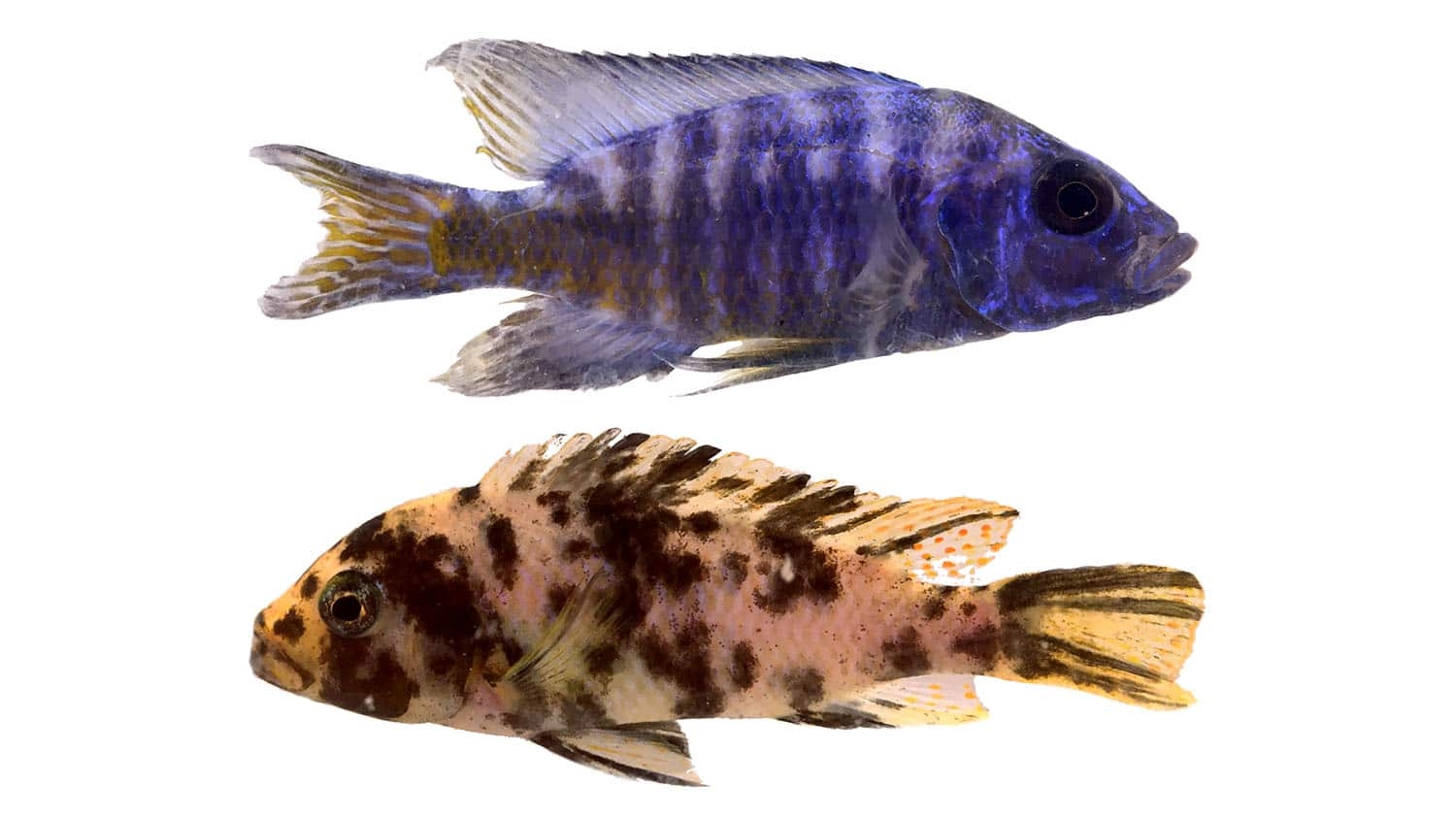Gut Length Driven by ‘Sexual Conflict’ in Fish Species

For Immediate Release
A new study that looked at gut length variation between cichlid fish species found that some of the genetic loci for the trait are sex-specific even though males and females of the same species have the same gut length. The work supports a scenario of “sexual conflict,” where gut length differences evolved under different pressures for males and females of the same species and could have implications for the understanding of gut length evolution more generally.
“Gut length is an incredibly important trait for animals, and there are consistent trends across different groups of animals where carnivores tend to have short guts, and herbivores tend to have long guts,” says Reade Roberts, associate professor of biological sciences at North Carolina State University and corresponding author of the research.
“However, almost nothing is known about the genetic basis of these differences, in part because it is a very hard trait for genetic mapping studies.”
The researchers used two closely related species of cichlid found in central Africa’s Lake Malawi – one an omnivore and one a carnivore – to do their genetic comparisons. The two species only diverged around a million years ago, so they remain very closely related even though certain traits, such as gut length, have diversified.
The researchers compared carnivore, omnivore and herbivore cichlid species to a hybrid carnivore/omnivore population to determine the genetic loci, or locations on the chromosomes, that correspond to gut length. They identified some loci that had the same effect on gut length regardless of sex. However, they also saw that different genetic loci impacted males and females differently across the species, even though males and females of each species had roughly the same gut length.
“The question now is why is there a genetic variant only active in females or males,” Roberts says.
The answer could have to do with the differing dietary pressures for male and female cichlids of each species.
For example, male cichlids are territorial, remaining in one place during their lives and are subject to varying food availability, while females range more widely. But females undergo regular periods of starvation because they hold their offspring in their mouths until they reach maturity.
“It could be dietary pressure, it could be hormonal – we don’t know,” Roberts says. “Male versus female bodies are almost like different environments, so you may need different parts of the genome to activate to get the same results. The exciting piece here is that if we hadn’t considered sex in this study we wouldn’t have found the majority of the loci for gut length.”
The research also has potential implications for human health.
“The basic questions – how did these differences arise and what do they mean for health outcomes – will lead to a better understanding of genetic pathways and what they’re doing, which could inform future human biomedical research,” Roberts says.
The work appears in Genetics and was supported by an Arnold and Mabel Beckman Foundation Young Investigator Award; the National Science Foundation under award IOS-1456765; the U.S. Department of Agriculture under award USDA-NIFA-SCRI 2020-51181-32156; and the National Institutes of Health under award R35 GM147107. Aldo Baez, postdoctoral researcher at NC State, is first author.
-peake-
Note to editors: An abstract follows.
“Gut length evolved under sexual conflict in Lake Malawi cichlids”
Authors: Aldo Carmona Baez, Erin N. Peterson, Melissa S. Lamm, Natalie B. Roberts, Kaitlin P. Coyle, M. Kaitlyn Barker, Ethan Dickson, Zhao-Bang Zeng, Rafael F. Guerrero, Reade B. Roberts, North Carolina State University; Patrick J. Ciccotto, Warren Wilson College; Emily C. Moore, University of Nebraska-Lincoln; Amanda N. Cass, University of Massachusetts; Guilherme S. Pereira, Federal University of Viçosa, Brazil
Published: May 26 in Genetics
Abstract:
Variation in gastrointestinal morphology is associated with dietary specialization across the animal kingdom. Gut length generally correlates with trophic level, and increased gut length in herbivores is a classic example of adaptation to cope with diets having a lower nutrient content and a higher proportion of refractory material. However, the genetic basis of gut length variation remains largely unstudied, partly due to the inaccessibility and plasticity of the gut tissue, as well as the lack of dietary diversity within traditional model organisms relative to that observed among species belonging to different trophic levels. Here, we confirm the genetic basis of gut length variation among recently evolved Lake Malawi cichlid fish species with different dietary adaptations. We then produce interspecific, intertrophic-level hybrids to map evolved differences in intestinal length in an F2 mapping cross between Metriaclima mbenjii, an omnivore with a relatively long gut, and Aulonocara koningsi, a carnivore with a relatively short gut. We identify numerous candidate quantitative trait loci for evolved differences in intestinal length. These quantitative trait loci are predominantly sex-specific, supporting an evolutionary history of sexual conflicts for the gut. We also identify epistatic interactions potentially associated with canalization and the maintenance of cryptic variation in the cichlid adaptive radiation. Overall, our results suggest a complex, polygenic evolution of gut length variation associated with trophic level differences among cichlids, as well as conflicts and interactions that may be involved in evolutionary processes underlying other traits in cichlids.
This post was originally published in NC State News.
- Categories:


